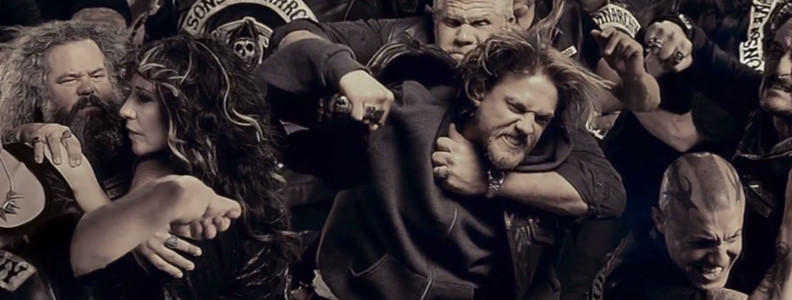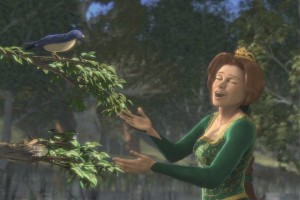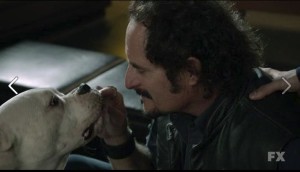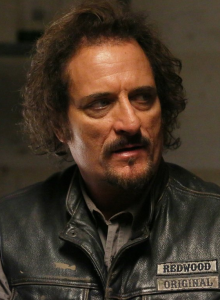 I have a confession—I binge-watched Sons of Anarchy. That’s right, I neglected work, my family, my nutrition, all of it for SOA. I had seen the commercials and was intrigued, but held off watching even a single episode until the finale hit Amazon Prime. Then I gave episode one a shot. And a few days later, I felt the overwhelming loss when there were no more episodes in my cue.
I have a confession—I binge-watched Sons of Anarchy. That’s right, I neglected work, my family, my nutrition, all of it for SOA. I had seen the commercials and was intrigued, but held off watching even a single episode until the finale hit Amazon Prime. Then I gave episode one a shot. And a few days later, I felt the overwhelming loss when there were no more episodes in my cue.
*Spoiler Alert*
Initially, Tig Traeger was my second most favorite character (following Opie). Later he became my favorite for the entire season.
At first, I liked TIg’s personality. He was funny and sensitive, but he could pull the trigger and kill as if it was second nature. He was also loyal to the club.
So loyal in fact that he accepted the assignment to take out Opie who was being framed by the ATF as a club snitch. (Something Opie would never do).
As the story unfolds, we see it coming. Opie’s wife Donna takes Opie’s truck. Tig mistakes Donna for Opie and performs the hit. This act was so heinous, so reckless, and wrong.
Donna was a great person, trying to raise her kids and keep her husband righteous while respecting his loyalty to the club. She was one of the good guys.
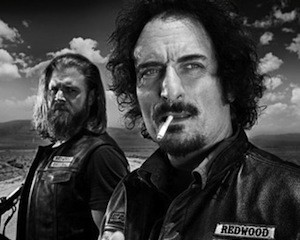 Opie was also one of the good guys. He ends up giving his life for the club that betrayed him. Opie didn’t deserve the hit but Clay, the club president, acting in ignorance, called on Tig who executed without question. In so many ways the hit was preventable. Tig could have looked harder, but he was already tore up about offing one of his brothers. And Clay could have showed more intelligence.
Opie was also one of the good guys. He ends up giving his life for the club that betrayed him. Opie didn’t deserve the hit but Clay, the club president, acting in ignorance, called on Tig who executed without question. In so many ways the hit was preventable. Tig could have looked harder, but he was already tore up about offing one of his brothers. And Clay could have showed more intelligence.
As soon as he killed Donna, I hated Tig. I wanted to see Tig die. I expected the writers to end his short involvement with SOA within the next couple episodes. But they didn’t. They kept him until the end.
They took Tig on a journey of redemption. Seasons later (or a couple days later) I reminded myself that Tig had killed Donna. But now I felt sorry for the guy. He had been ordered by the real offender, Clay. Yet, that was no excuse. I couldn’t love Tig again. Not after what he did.
Tig tries to make amends and eventually confesses to Opie. Opie forgives and this helps me forgive too. Then Tig finds a dog, badly beaten and almost dead. Tig takes care of the dog and nurses it back to health.
Then Tig’s two daughters are tortured and killed, burned alive in front of him. His pain and grief are so pitiful, I couldn’t help but care for the man.
Tig’s journey reinforced a few important key points to character development. First, Tig was not all good or all bad. He had traits in both arenas. Sometimes it was his good traits that got him into trouble and sometimes it was his bad traits that got him out. The writers carried us on a journey of emotion as they told Tig’s story. It wasn’t easy and it took time for Tig to recover from what he had done, but two main things helped Tig toward redemption—pain and kindness.
Characters become more likeable when they suffer. The death of TIg’s daughters caused a great deal of suffering. Characters become more likeable when they “pet the dog.” Showing kindness to animals (especially dogs), genuine concern even at the character’s own expense, and adherence to some sort of moral code, show us that they are really good people, or at least they want to be.
This worked for Tig. I’m glad the writers didn’t take the easy road and off this character in the first season as I suspected they would.
 I live in Arizona with my family, wife and five kids and two little dogs. I write fiction, thrillers and soft sci-fi with some short horror on the side. I’ve got an MBA and work in finance for a biotechnology firm.
I live in Arizona with my family, wife and five kids and two little dogs. I write fiction, thrillers and soft sci-fi with some short horror on the side. I’ve got an MBA and work in finance for a biotechnology firm.
I volunteer with the Boy Scouts, play and write music, and enjoy everything outdoors. I’m also a novice photographer.
You can visit my author website at www.jacekillan.com, and you can read some of my works by visiting my Wattpad page.

